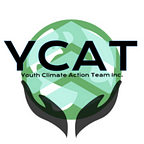Natural Alternatives to Harmful Cleaning Products
The aromas of cleaning products, disinfectants, and laundry soaps have become hallmarks of a clean environment. And while the overpowering smells of furniture polish or laundry soap evoke pleasant associations, those familiar scents are mostly toxic cleaning products that can cause a variety of health and environmental issues.
Most commonly used cleaning products are composed of various chemicals from reproductive disruptors, to phthalates, and allergens. In a 2018 Canadian Health Development study published in the Canadian Medical Association Journal, researchers found that the toxins in household cleaners can lead to childhood obesity. Moreover, the concentrated forms of some commercial cleaning products are designated as hazardous, posing significant handling, storage, and disposal risks for users.
Cleaning products are also large contributors to the pollution of waterways. In addition, they take a long time to degrade while some materials may not degrade at all and instead remain in the environment or in landfills. These residual chemicals culminate their way into the food chain, where they will be devoured by aquatic species and eventually, by humans. Once in contact, the harmful chemicals can cause health-related issues including irritation to the eyes, skin, or lungs.
For health and safety purposes, the Safer Choice-Certified Product Search from the United States Environmental Protection Agency provides a compiled gallery of natural alternatives to harmful cleaning products. Certain examples of natural items that are highly accessible and are minimal waste are listed below:
3% Hydrogen Peroxide and Lemon Juice
Hydrogen Peroxide and lemon juice is a great alternative to the more abrasive bleach. Despite the cleansing and disinfecting properties of bleach, it can rapidly turn lethal as breathing in these chemicals can be harmful to the respiratory system. Bleach that seeps into the soil or streams elevates the pH levels drastically, devastating plants and animals. This product can be replaced by either hydrogen peroxide or lemon juice which both make for a powerful, all-purpose cleaner and can clean glass without streaking.
Vinegar and Water
Commercial glass and surface cleaners often consist of butyl cellosolve, a hazardous substance that, as a carcinogen, is not safe for humans in any amount. By replacing it with vinegar and water, it works just as efficiently. This alternative can also be applied to floor cleaners.
Baking Soda
Toilet bowl cleaners and degreasers are among the most toxic household cleaning products as many branded products are highly corrosive and contain eye and lung irritants such as phosphoric acid and sulfates. These chemicals are high pollutants for groundwater and soil when flushed down. With baking soda, it is easier to clean off surfaces naturally with practically zero elbow grease and at almost no financial cost.
Essential Oils
Air fresheners top the list of hazardous home cleaners due to their abilities to trigger allergies and act as hormone disruptors as well as their harsh effects on waterways, skin, and organic matter. A majority of air fresheners contain a toxic cocktail of formaldehyde, aerosol pollutants, petrochemicals, and more. To replace these, use essential oil diffusers because they work the same way as an air freshener plug-in but without the harmful chemicals.
Cleaning products, while produced to clean your home effectively, do more harm than good when it comes to the environment and the human body. Replacing these with completely natural products can be helpful for one’s surroundings and their own health. If you are interested in buying safer alternatives, websites such as the Natural Collection and Grove Collaborative are certified options and have dot guides to chemicals that provide a summary to some of the environmental issues that cleaning products contribute to. Let us all safely clean our households by choosing natural alternatives that support our environment.
